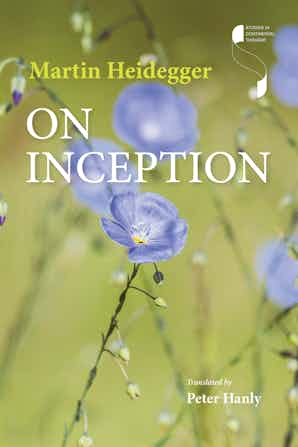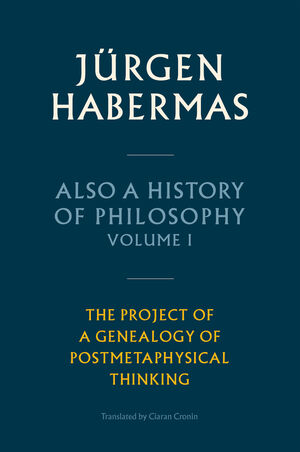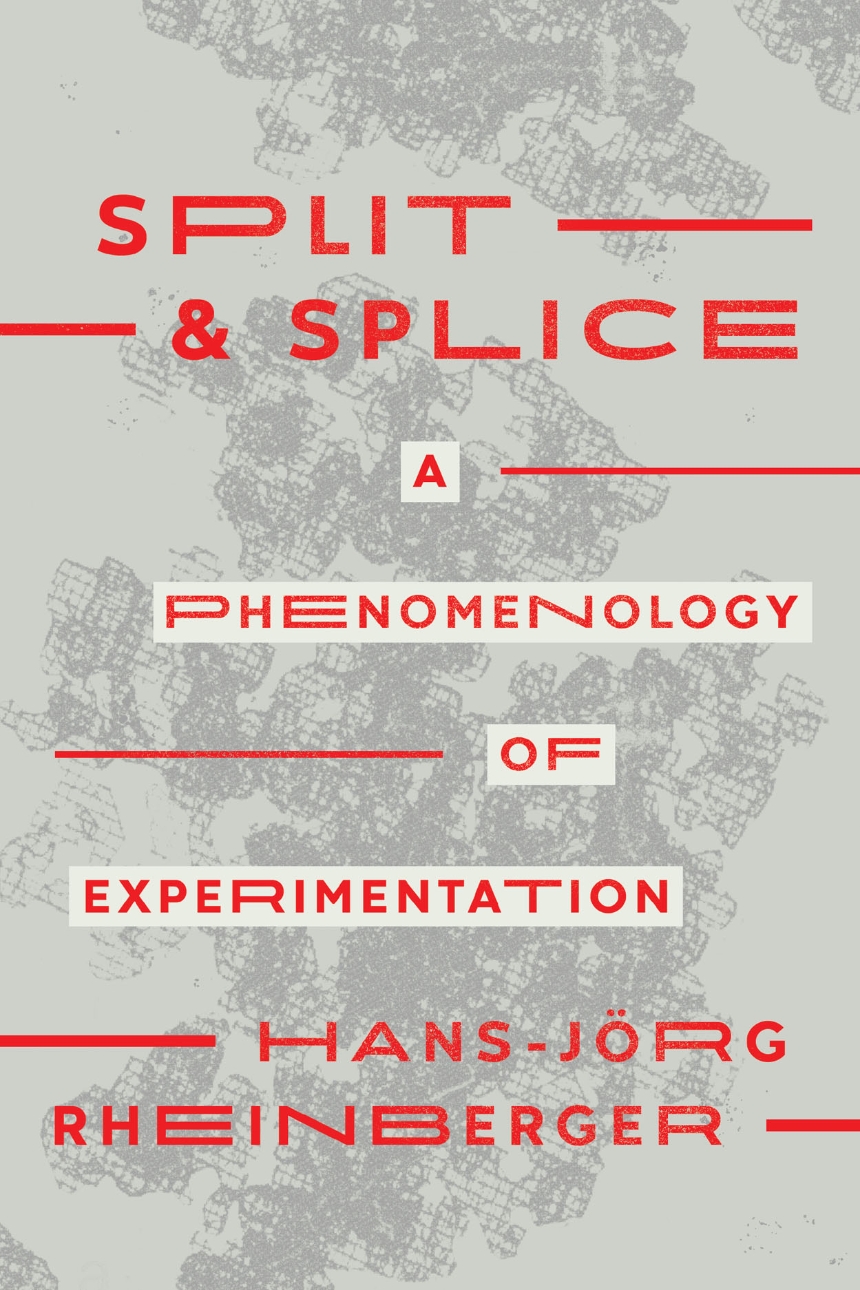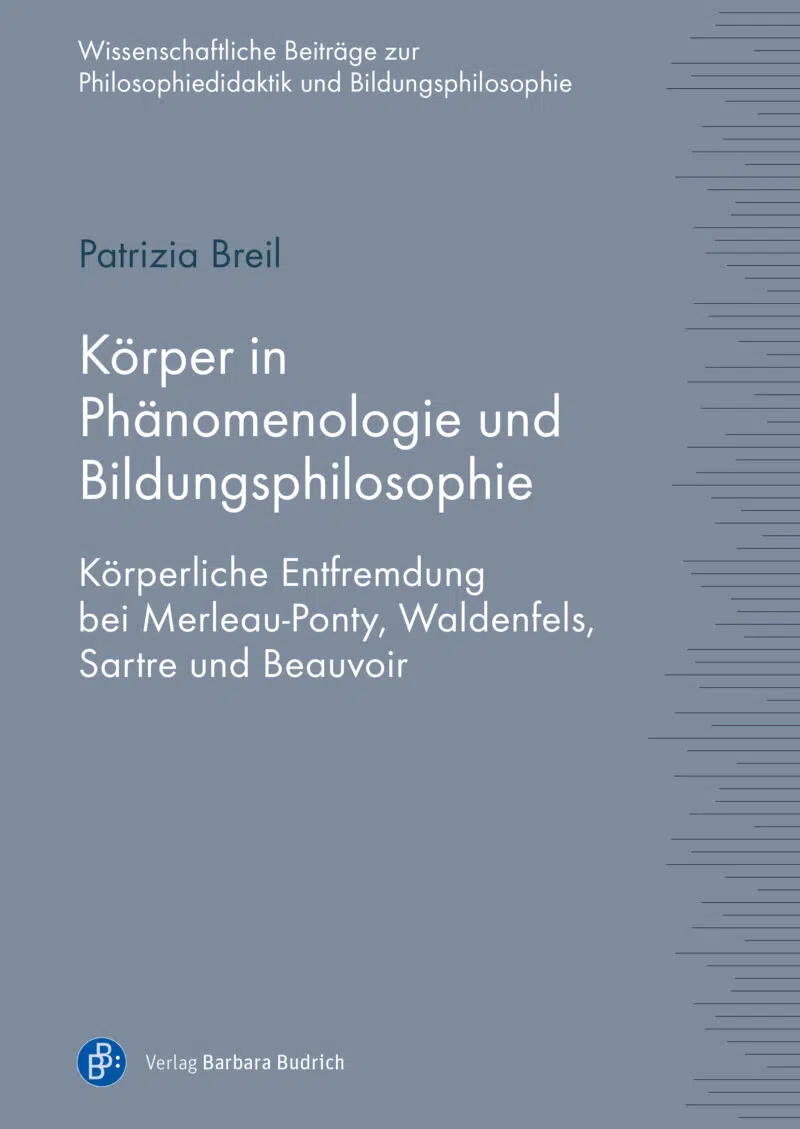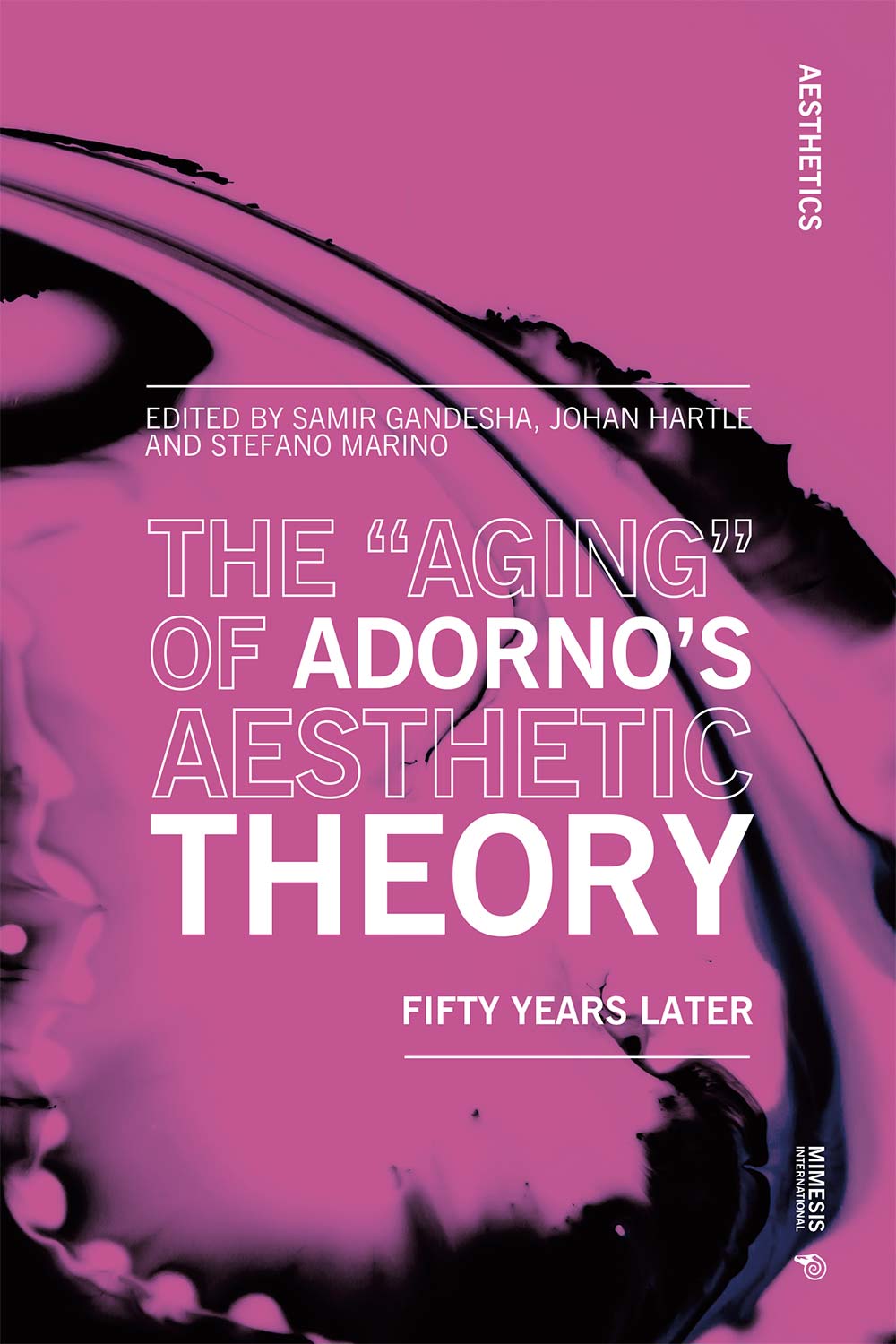Rozzoni’s book is a work of double value, as should any book of philosophy be about: at first it has the value of serving as a secondary literature text, that is, offering comments and references to its various primary sources, which include works mainly by Husserl, but also Merleau-Ponty, and others, and various other artistic works (paintings, photographs, films, installation pieces, etc.). However, being a secondary literature text, it has the unique capacity of not sustaining/conforming/limiting the reader between its 247 pages, but motivating one to visit the sources, that is, the primary texts it deals with. This is a virtue that only seldomly do works labelled as secondary literature possess. This is why, Rozzoni’s book gains a double-acquired value, which is that it can serve as a work that can be labelled primary literature as well, as it can also be read as a work that in itself offers an original approach to both philosophy, and especially aesthetics (in both its meanings, as a discourse on the senses and thus on perception and experience, but also as a discourse on artistic works/experiences), and also to art, literary theory, and film theory and criticism. It offers to both aesthetics and art/literary/film criticism a new perspective and even a new method or approach, through phenomenology, but also it offers to phenomenology a new aesthetic and artistic/literary/cinematographic dimension. At last, it also introduces, but profoundly so, a so far neglected work of Husserl, only translated in 2005, and, so far, not much studied or researched. The aforementioned work of Husserl are the Nachlass manuscripts on Phantasy, Image Consciousness, and Memory, published in 1980 in Husserliana XXIII in German, based on his 1905 course in Göttingen.[2]
Thus, Rozzoni’s The Phenomenological Image: a Husserlian Inquiry into Reality, Phantasy, and Aesthetic Experience is a work of multiple values and uses. Firstly, as a study of Husserl’s so far unnoticed Phantasy, Image Consciousness, and Memory. Secondly, as a philosophical commentary on Husserl’s phenomenology in general, and more specifically his aforementioned work, as well as a commentary on the of aesthetics and phenomenology, a study on phantasy and/in phenomenology and the different forms of experience in phenomenology. And thirdly, as an original work on phenomenological aesthetics, or even aesthetic phenomenology, and more specifically on new approaches to art, literature, and film theory and criticism. In other words, it is a source offering new (phenomenological) ways towards film theory and criticism.
It is an indispensable book for philosophers already working in phenomenology, or on experience, on phantasy, fiction, reality and other relevant subjects. It is, in general, an excellent book regarding a philosophy of experience (phenomenology’s major preoccupation is experience, but in this book, it becomes even clearer), and more specifically perceptual experience, aesthetic experience etc.
However, it can be read even by audiences that have no familiarity with phenomenology or even philosophy, since Rozzoni is doing a great job explaining in simple words every new term or concept that he is using (such as intentionality and many other), thus, every next page of the book is already prepared by the previous ones. Thus, it is an indispensable book for artists, art criticism and filmmakers and film theorists and critics, as well.
For that reason, it is a self-contained and self-sufficient work that offers both an introduction to phenomenology, but at the same time an advanced study of it with original insights spanning further than phenomenology or even philosophy itself. What can serve as an introduction to phenomenology can simultaneously function as a further redefinition of it, which is an important philosophical methodological trait, that is, that a philosopher always clarifies the definitions they are working with and makes no pre-suppositions. Thus, Rozzoni’s definitions and descriptions (as well as normative depictions) of phenomenology are important not only for their pragmatic function but predominantly for the meta-philosophical or rather meta-phenomenological one. I quote some passages so as to make my points clearer:
Phenomenological description must be capable of rendering a satisfactory account of the different modes in which our acts (and, correlatively, their objects) and our objects (and, correlatively, their acts) are given to consciousness. When we say our acts are intentional, it implies the necessary corollary that there can be no “consciousness” that is not a “consciousness of.” The relationship between consciousness and object manifests itself in different ways depending on the particular act involved—for example, perception of a tree, phantasy of a tree, etc.—and such relationships are “expressed by the little word ‘of’” (Hua XVI, p. 12; Hua I, p. 33). (Rozzoni 2024, 15)
He continues a bit later in clarifying the different “modes of consciousness” which are important both for understanding phenomenology (“phenomenology must…”), intentionality (which is core to phenomenology), Husserl, phantasy, image, and this book in general:
These initial considerations are enough to suggest that Husserl’s primary interest lies in discerning qualitative differences between our experiences, a question that drives him to seek out an essential distinction between what he calls “modes of consciousness.” Perception is only one such mode; objects are given to us in several other modes as well—such as when we see objects either through images or, as they say, “in our minds.” As indicated, phenomenology must be able to provide an account of the essential differences among these modes of consciousness as well as of the particular nature of each mode’s inherent intentionality—the essential correlation between its subjective and objective poles. After dedicating his efforts to the perceptual dimension in the first two parts of the course, Husserl uses the third part to attempt to define the eidetic differences that distinguish phantasy consciousness from perceptual consciousness. (Rozzoni 2024, 16)
When analyzing phantasy through a phenomenological lens, we are soon confronted with a phenomenon that will prove challenging: it seems that any description of the ways in which phantasy manifests itself must necessarily involve the notion of image. Indeed, it is in this context that Husserl comes to examine the issue of defining the particular type of manifestation pertaining to image and the related form of intentionality called “image consciousness.” In the third part of the Göttingen course, when seeking to define the nature of intentionality pertaining to phantasy acts, Husserl begins by describing this intentionality in terms of “pictorialization [Verbildlichung]” (see, for example, Hua XXIII, § 8). Let us remark that he had already adopted this approach in an 1898 text devoted to “phantasy and representation in image” (see Appendix 1 to Hua XXIII, pp. 117– 152)—a text that did, indeed, serve as a starting point for his later Göttingen analysis. (Rozzoni 2024, 17)
Moreover, the constant use of simple examples (e.g. the photograph of a friend) render the book even more accessible and the concepts and terms explored easier to understand.
Adding to the preciseness and clarity, Rozzoni systematically and precisely clarifies terms/concepts, as it is already shown, both in English and how terms have distinct meanings in German: for example, reality [positionality] – phantasy, fiction, phantasy [Phantasie] – imagination [Einbildung] – imaginatio, perception [Perzeption] – perceptio – Wahrnehmung. For example, he writes concerning the latter distinction, and the different choices of words in the original (by Husserl), but also by Rozzoni in the English translation:
Perzeption is Wahrnehmung without belief, and, as Husserl says, any Wahrnehmung that does not take (nimmt) something as true (wahr) is no longer Wahrnehmung in the proper sense of the word. It is legitimate to say that an object given perceptually (wahrnehmungsmäßig) is also given as complying with perceptio (perzeptiv), but the converse is not true: we cannot state that what is given when complying with perceptio (perzeptiv) is automatically given perceptually (wahrnehmungsmäßig). Though these terms may overlap in some cases, this does not change the fact that such a distinction can be rightfully (and not pleonastically) introduced in the English translation, thus allowing the reader to feel the distinction between Wahrnehmung and Perzeption that plays a seminal role in these analyses. This is why Husserl’s references to illusion claiming the status of reality are not, in principle, cases of phantasy complying with perceptio (perzeptiv), but rather of perceptual (wahrnehmungsmäßig) illusions that, once discovered, become canceled perceptions (Wahrnehmungen)—canceled realities only apprehended après coup as perzeptive Phantasien. Accordingly, we can also think of perceptio as a genus encompassing the species of positional perceptio (or Wahrnehmung) and positionless perceptio (or perceptio in the strict sense). (Rozzoni 2024, 17, n. 11)
At last, in a further way to be precise and clear, Rozzoni makes sure that he prevents possible misconceptions and misunderstandings, as for example in the sub-chapter 1.7: A Potential Misunderstanding: The “Image-Theory”, concerning “the unction Husserl assigns to the image object”. (Rozzoni 2024, 28)
Rozzoni engages in an interdisciplinary and transdisciplinary dialogue with artists (painters, installation artists, cinematographers), literary writers (Proust, Kafka), and philosophers (Plato, Nietzsche, Sartre, Merleau-Ponty, Deleuze). It furthermore offers numerous references to scholars dealing with relevant subjects such as imagination, phantasy, film theory and criticism etc. In this way, Rozzoni’s book can also serve as a reference book towards further researching the main topics it discusses (image, phantasy, imagination, reality, fiction, film, experience, perception, belief, time consciousness, epoché, content-form/style, etc.).
It is a book one can read multiple times, each time focusing on a different subject/topic, and each time feeling that they are reading a new book, since new perspectives and connections are opened at each reading, depending on the shift of focus.
Chapter 1 focuses, as it is already evident from its title, on the “Phenomenology of Image and Phantasy”, by visiting concepts such as reality, perception, imagination, phantasy, images, consciousness of reality, consciousness of fiction, etc., and also re-setting their inter-connections.
Chapter 2 entitled “The Aesthetic Consciousness”, evidently focuses on the nature and qualitative originality of aesthetic experience and consciousness, while also “deepen[ing] the originary phenomenological distinctions elucidated in the first [chapter]”. (Rozzoni 2024, 3) In more detail, I quote:
The second chapter deepens the originary phenomenological distinctions elucidated in the first but with a specific focus on the nature of aesthetic experience. Too often, the type of consciousness associated with aesthetic experience is confused with other modalities of consciousness which, despite possibly overlapping with aesthetic experience in some ways, must nonetheless be kept distinct as regards their originary sense. Specifically, the term “aesthetic” is often used interchangeably with terms like “fictional,” “artistic,” or “iconic,” thereby creating confusion that can fundamentally undermine research outcomes. Through the Husserlian manuscripts, I attempt to trace the roots of the “aesthetic” back to a consciousness which, though it may indeed have seminal connections to the associated terms listed above, ultimately possesses its own qualitative originality that cannot be reduced to any of those terms. (Rozzoni 2024, 3)
Moreover, it expands Husserl’s phenomenological re-appropriation of Kant’s “aesthetic disinterest”, through a phenomenological inquiry into the nature of this disinterest, emphasizing, as did Kant, “the moment of the “how” rather than the “what” of a manifestation”. (Rozzoni 2024, 4):
Despite entailing disinterest in something’s existence in the general sense (in other words, disinterest in whether something actually exists or not), aesthetic experience does involve another form of interest: though “existentially disinterested,” it is “axiologically interested.” In aesthetic experience, axiological interest manifests itself through the sphere of feeling—we experience a particular value, an appreciation for the manner in which something is given, and it is necessarily given in a feeling interrelated with this value.
Clearly, talking about the “how” of manifestation, the manner of appearing, might carry the risk of reintroducing the dichotomy between content (what) and form (how) into the discussion of aesthetic experience. […] In aesthetic experience, even the most ordinary object can emerge in the value of its manifestation—and strictly speaking, all manifestations can be aesthetically “expressive” in principle: a “zero degree” of aestheticity is only a limit point. (Rozzoni 2024, 4)
In more detail, Rozzoni discusses in the subchapter 2.6: Constituting the “How”: Stylistic Manifestations (pp. 110-112), this habitual dichotomy between style/form (how) and content (what), which is unfairly conceived as a dichotomy or a binary, as well as content is unfairly conceived as of being hierarchically superior (I would name it as a certain hegemony of the “what” in philosophy, which takes the dimensions of essentializing the philosophical discipline to a “science” -not even, at least, an “art”-, of the content, and allocating to other sciences or arts the “burden” of occupying themselves with the “lesser” “how” of the style or form.) This intra-hegemony of content over form, is a reflection of the general (meta-)philosophical inter-hegemony and supra-hegemony on all other disciplines and forms-of-thinking, found in its most systematized depiction in François Laruelle’s Non-Philosophy.
As Rozzoni observes, “the distinguishing element in aesthetic experiences is the particular mode of manifestation in which the phenomenon is given (among many possible such modes).” Afterwards, he is talking about the “precise phenomenal modalities whose specific manner of appearance yields an aesthetic effect” (Rozzoni 2024, 110). These “precise phenomenal modalities”, in my understanding, are another formulation for style or form, since, in the following paragraph, he proceeds to give an example from a film, where the director makes “specific stylistic choices […] when depicting one man killing another allow[ing] us to feel not only the what— […] —but also the how”. (Rozzoni 2024, 110) He then mentions the notion of “rhythm”, which is an important stylistic element, on which he also has a reference to Merleau-Ponty, on the “relationship between the how (style, rhythm) and value in cinema”. (Rozzoni 2024, 110, n. 123)
I quote this extended passage since I think it touches on important points concerning the aesthetic experience and style:
To sum up, with belief-acts of each of these four types, we have an essential, eidetic option to transform them into (modified) phantasy acts, rendering them neutral in terms of possible reference to actual existence. Crucially, however, the resulting phantasies do not yet constitute aesthetic experiences merely by virtue of having left reality out of play; rather, the distinguishing element in aesthetic experiences is the particular mode of manifestation in which the phenomenon is given (among many possible such modes). To continue with Husserl’s example, an iconic phantasy of one man killing another may take the form of a mere iconic presentification of a quasi-fact—with no attention to its mode of manifestation—or it may employ precise phenomenal modalities whose specific manner of appearance yields an aesthetic effect. (Rozzoni 2024, 110)
For example, in the duel scene near the end of For a Few Dollars More (Per qualche dollaro in più, 1965), the specific stylistic choices Sergio Leone makes when depicting one man killing another allow us to feel not only the what—the quasi-occurrences on-screen that could just as easily be recounted through a purely iconic sequence, advancing the plot without artistic pretensions—but also the how, the value of this particular scene as it unfolds. Our aesthetic experience is affected by the fact that the different phases of the duel are depicted in this particular way, with this specific “rhythm.” Husserl rightly takes care to emphasize what may seem like an obvious point, namely that things are always given in accordance with a mode of manifestation (in the aesthetic sense just described), a mode that may or may not elicit aesthetic pleasure or displeasure—what we might describe as “positive” or “negative” aesthetic valence.
Further on, quoting from Husserl’s Text 15, he refers to phrases such as “object’s manner of appearing”, “mode of presentation [Darstellung]”, and “mode of manifestation”, which all put style, form, and in general the “how” of an object, in the spotlight, apart from its “objective position taking” and “the consciousness of an object as such” (the “what”). (Rozzoni 2024, 111, quoting Husserl in Hua XXIII)
Chapter 3, entitled “Toward Perspectival Images”, investigates “some of the ways that art can become a domain for broadening the notion of aesthetic experience to encompass the possibility of producing a perspective aesthetically (in a contemporary development of the Kantian notion of ‘aesthetic idea’).” Here the potential of art or artistic experience to “transform our conception of the world” (Rozzoni 2024, 4) is explored, “altering the perspectives in which we always live.” (Rozzoni 2024, 5) Thus, here, Rozzoni dares the intimate but neglected connection between art (artistic experience), ethics (how we live), and philosophy:
These transformations can be connoted either positively (by enlightening us to previously unknown facets of the world) or negatively (by concealing, anesthetizing, or speciously “spectacularizing” reality).
More fundamentally, I seek to demonstrate how, by acting upon sense as the foundational element of a (real or fictitious) world, art can operate in a dimension “refractory” to the distinction between documentary and fiction—sub specie sensus—and can even explore the thresholds between these two polarities in multiple directions; […]. Art recipients thus become participants in perspectives that force them to think at a cognitive-emotional-axiological level, whether or not they believe in the factuality of what they are seeing.
Artistic images can vary and deform reality— not so much to offer a diversion from it as to allow new essences to emerge and thereby create possibilities for expressing new perspectives.
The third chapter examines this concept in detail, specifically in relation to cinematographic images. (Rozzoni 2024, 5)
[…] If, as I propose, the condition of a world’s possibility for manifestation is the essential connection among narrative (perspective stricto sensu), values, and emotions, these authors think of cinematography as a privileged field that, though purely presentificational in nature, can create new perspectives directly affecting our perpetually perspectival comprehension of what we call “the world.”
In fact, cinematography can also provide an avenue through which to experiment with experiences we typically cannot or would not seek out in real life. (Rozzoni 2024, 6)
Proceeding to give some sample tastes of the possibilities of (attempting/essaying) thinking that it offers, à la Nietzsche’s sisyphean (sapere–sapio) method of philosophical thinking, that tastes over (thinking) possibilities, I will start from the first line of the Preface, which in a philosophical but mostly a psychoanalytical wording talks about a “return to […] the image”, in the same way that Lacan spoke of a return to Freud, or Aristotle of a visiting or a return to names (etymologies). This is the clear core purpose of the book “to promote a return to a description of the image that starts from its fundamental characteristics, its essential features.” (Rozzoni 2024, 1). Furthermore, “[t]he fundamental question that such lines of inquiry soon raise concerns whether there are structural differences between our image experiences and phantasy experiences—or, in phenomenological terms, between image conscious- ness and phantasy consciousness.” (Rozzoni 2024, 1) In the attempt to answer this Rozzoni takes different tastes of Husserl’s work, in discussion, as said, with commentators and scholars as well as other philosophers, artists, literary writers, filmmakers, etc. More specifically, to focus on Husserl, in his course from 1905 attempted to define the nature of image based on his inquiry on the nature of phantasy. Thus, it already becomes evident that in Husserl there is a direct correlation between imagery and phantasy. This is the key question here as Rozzoni locates it, “whether phantasy consciousness is ultimately founded upon image consciousness. […] In other words, does phantasy need images in order to represent absent objects, or is our ability to produce and see images instead grounded in phantasy consciousness?” (Rozzoni 2024, 2)
The Husserlian answer to this, which Rozzoni will keep analyzing, is a reversal of the hypothesis that “phantasy needs images”: I quote:
[…] his phenomenological inquiries yielded the result that phantasy need not necessarily be founded on the capacity to pro- duce mental images. In Husserl’s view, the capacity for phantasy (as an originary modality of consciousness) need not be grounded in images proper; rather, phantasy consciousness is what underlies the capacity to recognize and produce physical images. He determines that phantasizing is not projection of an image medium acting as a representative for an absent object but rather is perception in the as-if, quasi-perception carried out by a quasi-subject—hence the possibility of distinguishing between real and phantasy egos from a phenomenological standpoint. In this sense, phantasy is the originary mode of consciousness that, in more strict phenomenological terms, can be called presentification. We can then further distinguish between “private presentifications” (quasi-perceptions without images) and presentifications in image. (Rozzoni 2024, 2)
As part of his analysis, which involves further original questions inspired by this Husserlian answer, he is asking whether the usual distinction or even dichotomy between images pertaining to phantasy, and perception pertaining to reality, shall be further “tried” in terms of thinking: “in other words, that proper images (presentifications in image) are eo ipso considered nonreal, whereas perception involves things ‘in the flesh’ and thus taken as real.” (Rozzoni 2024, 2). This is the main inquiry of Chapter 1 entitled “Phenomenology of Image and Phantasy”:
[…] perception per se is no guarantee of reality, nor does the image per se guarantee unreality: it is possible for perceptual experiences (or, more precisely, experiences complying with perceptio) to pertain to phantasy and for image experiences to force associations with reality. Though the image in itself is “unreal” in the sense of its presentifying nature (it shows something not present in the flesh), this is not to say that the sujet— the thing or person we see by “looking into the image”—cannot or should not be considered real. In short, we can have phantasies in the flesh and images imbued with belief.
[…] The image in itself makes no absolute guarantees concerning belief or lack thereof: context is what motivates the emergence of a documentary or fictional consciousness in relation to any given image. The same can apply to perceptual, noniconic experiences: we can experience them either in a consciousness of reality (as occurs constantly in context of going about our everyday lives) or a consciousness of fiction (as is the case, to mention one paradigmatic example, when we watch events upon a theatrical stage, which represents one possible context in which fictional worlds can comply with perceptio). (Rozzoni 2024, 2-3)
Rozzoni’s methodological insights, appearing, apart from the Preface, in more detail under Chapter 1, Sub-chapter “Again and Again” (1.1) are interesting themselves. It seems to me that he is consciously or unconsciously following a Deleuzian methodological-creative approach regarding the definition of philosophy as a creation of concepts. I think that this creativity can only spring from a synthetic openness, a wide and broad variety of interests within a field, an interdisciplinary openness, and a personal passionate investment to the topic of the research, as much as a “diagnosis” of an issue that is critical for the spatiotemporal milieu of one’s living experience. Rozzoni’s project/book incorporates all of the aforementioned elements or criteria, which render it significant, and original. In more detail, the three criteria that Deleuze has set for the worth-writing book/work (“bon ouvrage”) are the following: at first, spotting an error in books on the same or neighbouring subject (polemical function), then adding something that you think was ignored or forgotten on that subject (inventive function), and, at last, creating a new concept (creative function).
Hence, Rozzoni starts by spotting an “error”, or rather an omission, concerning Husserl’s manuscripts, on which his study is rooted upon, which are the manuscripts on Phantasy, Image Consciousness, and Memory, elaborated over a period of 20 years, and published in 1980 in Husserliana XXIII in German. Their importance according to Rozzoni is that they “serve as testimony to the father of Phenomenology’s style of work—evidence that is all the more significant because it concerns themes Husserl considered crucial to the destiny of the entire phenomenological project, despite having devoted comparatively little space to them in works published during his lifetime.” The fact that a manuscript is not published by a philosopher/writer shall “not mean that they are not of great importance: they offer valuable insights into published passages devoted to phantasy and image consciousness, offering beneficial context through which we can appreciate their relevance more fully.” (Rozzoni 2024, 10)
Hence, he is spotting an error in the research around these manuscripts and their corresponding thematic units and concepts (polemical function), and he is adding something that he thinks was ignored or forgotten on that subject (inventive function), which is the “underappreciated theme”, in Husserl’s corpus, of the phenomenology of (the) image (Rozzoni 2024, 11). The reasons for this underrepresentation and underappreciation are given as follows:
Whereas Husserl’s phenomenological analyses concerning theory of judgment, logic, perception, and time are well-known, his contributions toward a phenomenology of phantasy and image might be described as relatively unknown, or at least lesser known until recently. One reason for this is the aforementioned lack of space devoted to the topic in Husserl’s published works (see, for instance, Hua I; Husserl 1939, especially §§39–42), even though Husserl famously declared that “feigning [Fiktion],” exercised by our “free phantasy,” “makes up the vital element of phenomenology as of every other eidetic science” (Hua III/1, p. 160). Moreover, Husserliana XXIII, which collects the bulk of Husserl’s unpublished work on Phantasy and Image Consciousness (Hua XXIII), was only published in 1980, and John B. Brough’s English translation was not released until 2005. Now, however, several aspects previously overlooked or misunderstood by many contemporary theories of image can be addressed more thoroughly with the help of these richly complex writings, and these implicit potentialities are on the verge of finally taking their rightful place within philosophical debate on the subject (Brough 2012; Ferencz-Flatz/Hanich 2016; Wiesing 2005). (Rozzoni 2024, 11)
He continues by clearing up this lacuna (inventive function), and from the matrix of the lacuna to, then, proposing a new potential arising concept, or field of study, for new phenomena (of image) in phenomenology and in philosophy in general (aesthetic and other experiences), as well, as we will see in the following chapters, in art and in film. Thus, these phenomena pragmatically extend in interdisciplinary and transdisciplinary ways, rendering them a concept:
[…] the Nachlass writings shed light on the specific (and difficult) genesis of some of the most significant results Husserl published within his lifetime, and even directly explore the complex (and problematic) nature of these processes of perpetual development. Another seminal aspect immediately relevant to our work is that these manuscripts on image and phantasy (and, more generally, on reality and unreality) invite others to embark upon their own explorations of these topics. (Rozzoni 2024, 10)
Though the Nachlass represents a corpus of posthumous manuscripts, it would be a mistake to discount the enormous potential within these pages for that reason alone. Rather than construing this as some insurmountable obstacle to the contemporary revival of such research, let us think of it as a precious—albeit complicated —opportunity to develop a new field of study concerning new types of descriptions for new phenomena. (Rozzoni 2024, 11)
The further pragmatic importance of studying these phenomena, apart from establishing a new field of study or a new concept (thus rendering this book a primary source), through which readers “embark upon investigative processes of their own” (Rozzoni 2024, 11), is that if we cast light on Husserl’s corpus, and read this book as a secondary source this time (as said, it has this double function), these unpublished philosophical manuscripts can have the value of revealing a “seminal role in shedding light on the genesis of an author’s published corpus and providing a treasure trove of new avenues through which to explore and develop the author’s thoughts.” (Rozzoni 2024, 11-12)
To emphasize it once more, as does Rozzoni, this does not mean that this study is limited to what I call its secondary function, namely, as commentary of the manuscripts of Husserl, thus merely opening up an horizon of study within Husserl’s scholarship, or what Husserl would also call a “regional ontology” or “ontological region”, but, and according to Husserl’s methodological insights on the phenomenological method, [thus studying these new horizons that these phenomena open up to, that is, the “essence of images”, based on Husserl’s phenomenological method; a cyclical meta-textual process, which constitutes another originality of this book], also opening “new horizons and descriptions such an approach could potentially reveal today, and how we might use Husserl’s legacy—which he encouraged others to test “again and again [immer wieder],” especially through variations—as a starting point for new inquiries.” (Rozzoni 2024, 11)
Such horizon-openings can be extended to phenomena which were not already there when Husserl was writing, but which are prominent nowadays (“phenomena that Husserl did not specifically describe”) (Rozzoni 2024, 10), that is on our own Umwelt, such as “image material found on the various electronic devices that have now become part of our everyday lives […].” (Rozzoni 2024, 10-11) If we were “to insist on subjecting any phenomena that Husserl did not specifically describe […] to static limits defined before such phenomena existed, it would betray the very spirit of phenomenology.” (Rozzoni 2024, 10-11)
Moreover, despite admitting that “[t]he present study does not pretend to be all-encompassing regarding the different ways in which such a task might be undertaken” (Rozzoni 2024, 12), that is, the different possibilities of horizons, a further horizon that Rozzoni’s book can achieve to open out is to “yield retrospective potential for new dialogues between Husserl and [these] philosophers, thereby opening up novel possibilities for interpretation, development, and critique that can and must serve as an avenue toward productive perspectives on our contemporary understanding of images.” (Rozzoni 2024, 12) This is due to the late publication of these Husserlian manuscripts in 1980, and the fact that philosophers that were influenced by Husserl, such as Sartre, Merleau-Ponty, Deleuze and others, did not have access to it when forming their own concepts.
Such expansion of horizons and new conceptualizations (“paths”) “are never easy” as he admits, “and worse yet, they are perennially menaced by aporetical results.” (Rozzoni 2024, 10) This latter phrase, “perennially menaced by aporetical results”, I find to be a quintessential phenomenological but also philosophical “feeling” and disposition, or even a stylistic and a methodological philosophical act of epoché, dictated by the affirmation of aporia within a philosophical tendency and thinking, as it was also set to be in Ancient Philosophy, re-set by Friedrich Nietzsche’s method of ephexis, and systematized in François Laruelle’s non-philosophical methodology, abstaining from or suspending from arriving at a (final) decision, thus having the philosophical courage to stay and remain “menaced” by aporias; as much as posthuman feminists advocated on the virtue of “staying with the trouble”, against the totalitarian modern or positivistic (or “scientifistic” as I would prefer it) reflex or tendency (or rather obsessional or even psychotic tendency that in combination seek for a certainty-safety-trust nexus regarding an “unmovable earth” or ground of thinking, -to borrow Husserl’s phrase on the immovability of the earth-) of arriving at a final unmovable result. I quote from Rozzoni:
Such paths are never easy, of course—and worse yet, they are perennially menaced by aporetical results. Despite treading arduous ground, however, the material in these manuscripts offers us a unique opportunity to describe the iconic and imaginative dimension of our time in the spirit of phenomenology. Echoing a well-known Merleau-Ponty essay, this would mean striving to develop the “shadow” (Merleau-Ponty 1959) of Husserl’s legacy—a shadow that still looms large today, inviting us to take up the challenge and shed new light on these elusive domains (while simultaneously generating new and productive obscurities, as an essential counterpart of every process of clarification (Franzini 2009, pp. 37–47)). (Rozzoni 2024, 10)
At this point, I would like to raise three further points from this book which, I consider, at least from my own horizon/“regional-ontology”/“situated point of view”, as highlights that can motivate further thought.
The first, concerns what I would call the “Heideggerian colonization” of Continental Philosophy, and especially the “Heideggerian colonization” of the philosophers that Heidegger mostly deals with, as is the case of Husserl. Although Rozzoni does not either explicitly or implicitly make such a statement, I think this can be deducted as a comment, not only from various other instances of reading authors such as Plato, Schelling and others, from the point of view that Heidegger has read them, so that they become, in a way, more of a Heidegger’s Plato and a Heidegger’s Schelling than themselves as themselves, but in addition here from the fact that Heidegger happened to edit “the well-known ‘lectures on time consciousness’ in 1928 in Volume 9 of the Jahrbuch für Philosophie und phänomenologische Forschung.” (Rozzoni 2024, 12-13) These lecturers are only the fourth part of the Principal Parts of the Phenomenology and Theory of Knowledge (Hauptstücke aus der Phänomenologie und Theorie der Erkenntnis), which is a course that Husserl taught in Göttingen in 1904/05. I think that it is not completely irrelevant that Heidegger edited the fourth part of these lectures into a published volume, and this same fourth part gained the most notoriety out of the three other parts, where the first and second were devoted on the phenomenology of perception and attention, and the third on “a phenomenological description of phantasy as he considered it a necessary and complementary step to its account of perception.” As Rozzoni further explains: “He set out to uncover the essential differences between perception and phantasy, eventually finding them to be two originary modes of manifestation marked by an irreducible temporal difference (hence his devotion of the fourth and final part of the course to seminal investigations of time consciousness).” (Rozzoni 2024, 1) Thus, Rozzoni’s book comes to fill this lacuna in Husserlian studies and re-emplace the importance of all four parts, but especially of part three (on phantasy), within Husserl’s experiential strata comprising his “science of knowledge” or gnoseology, and their respective forms of intentionality. Maybe this bias that was taken up by Heidegger, was already initiated by Husserl, who, as he
explains at the beginning of this seminal course, [he] initially intended to devote the lectures exclusively to “the superior intellectual acts, […] the sphere of the so-called ‘theory of judgment.’” Later, however, he felt compelled to instead conduct an analysis at a “lower level,” i.e., of “those phenomena that, under the somewhat vague titles of perception, sensation, phantasy representation, representational image, memory, are well known to everyone, yet have still undergone far too little scientific investigation” (Hua XXXVIII, p. 3). This testifies to Husserl’s belief that a “science of knowledge” would inherently entail analyzing the “aesthetic ways in which this knowledge is articulated” (Franzini 2002, p. XIV); in this sense, this third Hauptstück may provide a capital contribution to the study of aesthetics as gnoseologia inferior.
It is in this context of inquiry into the lower experiential strata that Husserl confronts the challenging task of providing an account of the concept of phantasy, which he considered a necessary counterpoint to the account of perception he gave in the first two parts of the course (see Hua XXIII, p. 1). This would ultimately prove crucial to defining the particular form of intentionality pertaining to phantasy and image consciousness under scrutiny in this book. (Rozzoni 2024, 13-14)
Despite the fact that Husserl, as a philosopher critical to himself, changed his mind and made a four-part lecture onto experience/gnoseology, his commentators and editors were still biased towards the “superior intellectual acts”, as did Philosophy for most of its history, and especially philosophers that made it to the (hegemonic) canon, such as Heidegger.
The second point that I would like to highlight, concerns a possible connection, which I formed based on Rozzoni’s writing, between phenomenological epoché and psychoanalysis. This is not a connection that Rozzoni implies in any sense, but through the way he describes the phenomenon of Ichspaltung (ego-splitting) (in 1.10: Phantasy Ego, pp. 38-44), based on Husserl’s Text no. 15, he paves a connection between it and phenomenological epoché, which if thought further, since Ichspaltung can also concern psychopathology and psychoanalysis, then it might be said that there is a possible connection between phenomenological epoché and psychoanalysis to be additionally elaborated on. To further unveil this thought, towards a possible future elaboration, Rozzoni explains, starting from the aforementioned section, that “the phenomenon of Ichspaltung” is “the division of the ego into the real ego and the phantasy ego” (Rozzoni 2024, 38). The corresponding footnote is the piece of text which inspired this connection to me: “The phenomenon of ego-splitting (Ichspaltung) does not concern the relationship between real and phantasy experiences exclusively. It goes to the very heart of the possibility of the phenomenological epoché.” (Rozzoni 2024, 38, n. 38) If the Ichspaltung is a presupposition or a precondition for the phenomenological epoché, then how could we connect both non-pathological (construction of the phantasy experience/intentionality) and pathological cases of ego-splitting (such as psychosis) with the methodological act of epoché? And also, could there be a linkage between epoché and pictorial arts and film (since they are, in a way, a parastasis of the phantasy experience/intentionality)? Which new methodology can we derive from these, which new insights into phantasy and psychosis, as well as which new insights from phantasy and psychosis concerning each other as well as the phenomenological epoché? These will remain open questions for the moment.
A last, the third point to highlight concerns style/form (how) and content (what), as already aforementioned in the presentation of Chapter 2. Such a stylistic emphasis is rarely found in philosophy, especially within academia and secondary literature on philosophers-but it is nearly always found in the work of all philosophers, which consists a paradox-, and thus I think it is always important to highlight it when an author/philosopher reserves some lines or pages on philosophical stylistics or the aesthetics of philosophical style.
There are further innumerable both systematic but also aphoristic points that one can locate in Rozzoni’s The Phenomenological Image, thus rendering it a work that can be read at and from multiple “places” and multiple times, offering different perspectives to not only phenomenologists or philosophers, but also to artists, filmmakers, art and film theorists and critics, literary theorists, but also to anyone seeking to see, in action, how philosophy operates, since, in my view, it is a book concentrating some of the best philosophical methodologies and traits one can use, as demonstrated in this review.
[1] This paper is prepared as part of my postdoctoral research project “Ontological Exhaustion: Being-Tired, and Tired-of-Being: a philosophy of fatigue, exhaustion, and burnout” at the Institute of Philosophy and Sociology, Bulgarian Academy of Sciences, implemented with the financial support of the National Programme “Early-stage and Postdoctoral researchers” – 2, Stage 1, 2022–2024.
[2] Husserl, Edmund (1980): Phantasie, Bildbewusstsein, Erinnerung. Zur Phänomenologie der anschaulichen Vergegenwärtigungen. Texte aus dem Nachlass (1898–1925). Ed. Marbach, Eduard. Den Haag: Martinus Nijhoff; – Phantasy, Image Consciousness, and Memory (1898–1925). Eng. transl. ed. by Brough, J., Dordrecht: Springer, 2005.
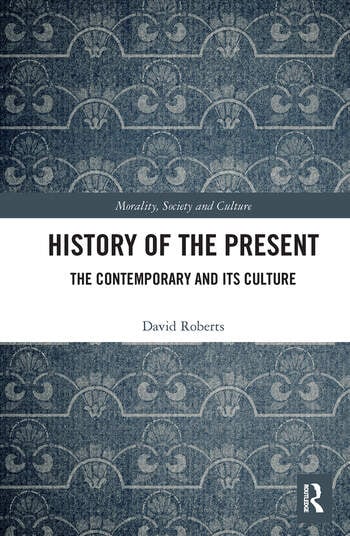 History of the Present: The Contemporary and its Culture
History of the Present: The Contemporary and its Culture

